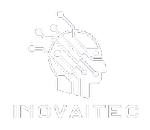View, Explore, and Convert 2D SVG into 3D Data
SVG
Scalable Vector Graphics (SVG) is a type of vectorized image format for defining two-dimensional graphics.
Vector-based formats such as SVG are very useful in technical drawing programs, like Fusion 360, because an SVG image can be scaled to any size without losing its shape or details. The SVG can be scaled to any required resolution and converted to bitmap formats like PNG or JPEG for printing.
The SVG image is described in an XML-type language, which means that it can be opened and edited with a simple text editor to make changes. Due to its text-based nature, the file can also be searched, indexed, and compressed easily.
OCCSVG.NET
This a library designed for reading SVG files (Scalable Vector Graphic), accurately interpreting shapes, including their strokes, fills, and other properties. It supports most types of gradients, patterns, which gives designers the freedom to define their drawings in almost any vector drawing application and save them into SVG file. Additionally, the SVG3DViewer application can view, explore, & convert 2D SVG to 3D Geometry via an extrude operation, which is useful for BIM (Building Information Modeling) for CNC laser engraving and cutting (for example, laser engraving from SVG logos onto products).
The OCCSVG.NET package is available as NuGet package [OCCSVG.NET NuGet Package] and can be referenced by a .NET application supporting .NET Standard 8.0.
The used SVG3DViewer is available on the GitHub page. This application displays the topology of the SVG model and its elements in a Tree view. It also allows to edit the elements in the Tree, so it can be used to see how arbitrary SVG code will be displayed using the library.
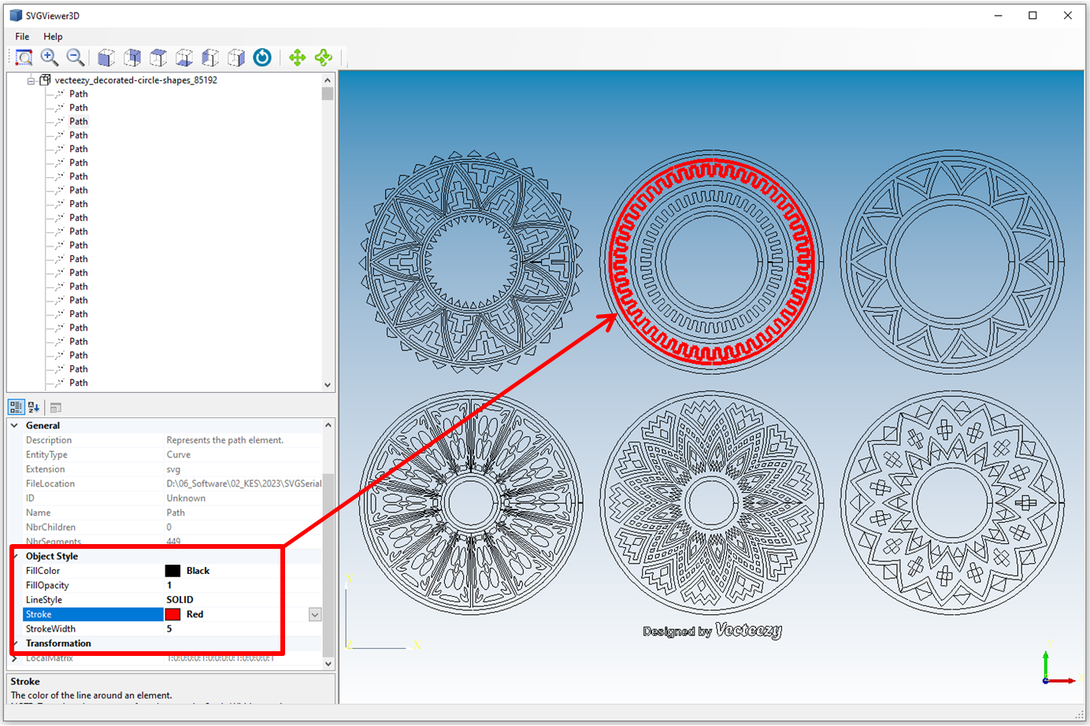
Usage
OCCSVG.NET library can read, render, and export SVG graphics objects. SVGs are used for many things, including basic shapes, symbols and paths on graphical user interfaces, as well for templates:
Importing
The following SVG objects can be imported:
- PATH objects:
- Cubic Bezier
- Quadratic Bezier
- Elliptical Arc
- BASIC SHAPES:
- LINE
- RECTANGLE
- CIRCLE
- ELLIPSE
- POLYGON
- POLYLINES
- TEXT
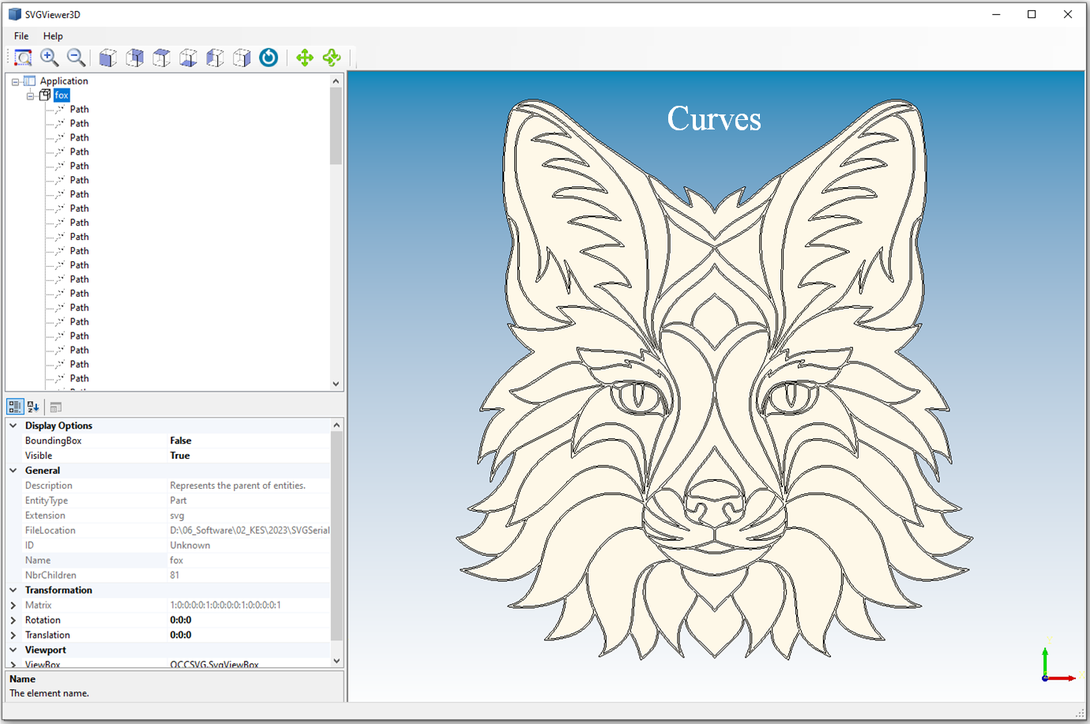
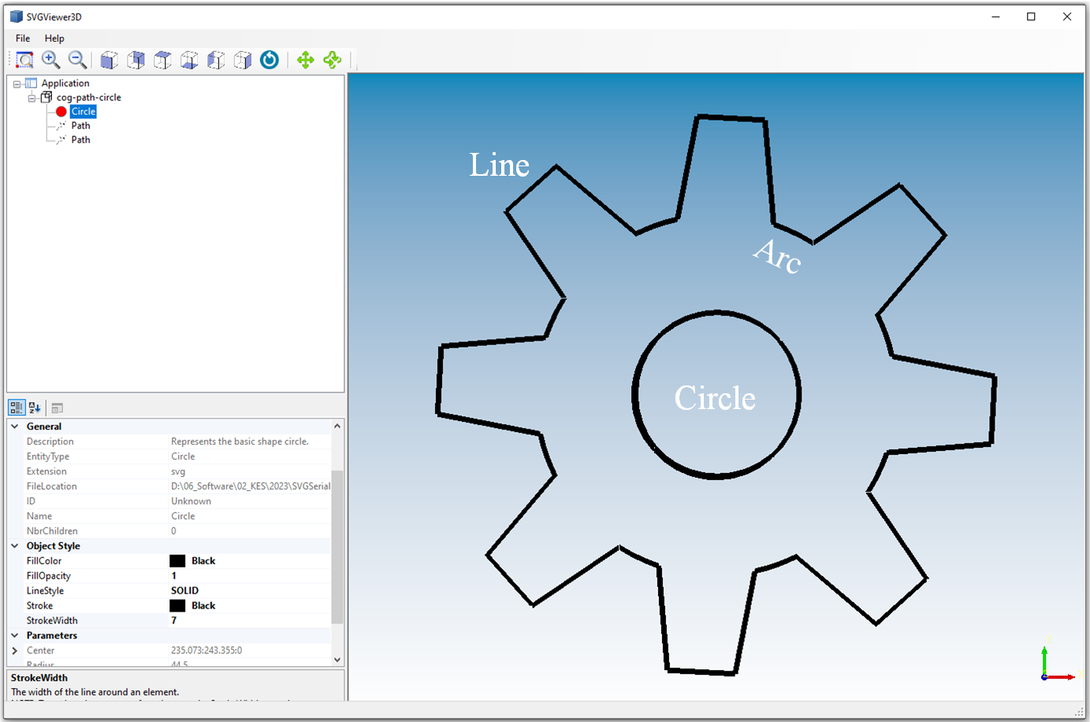
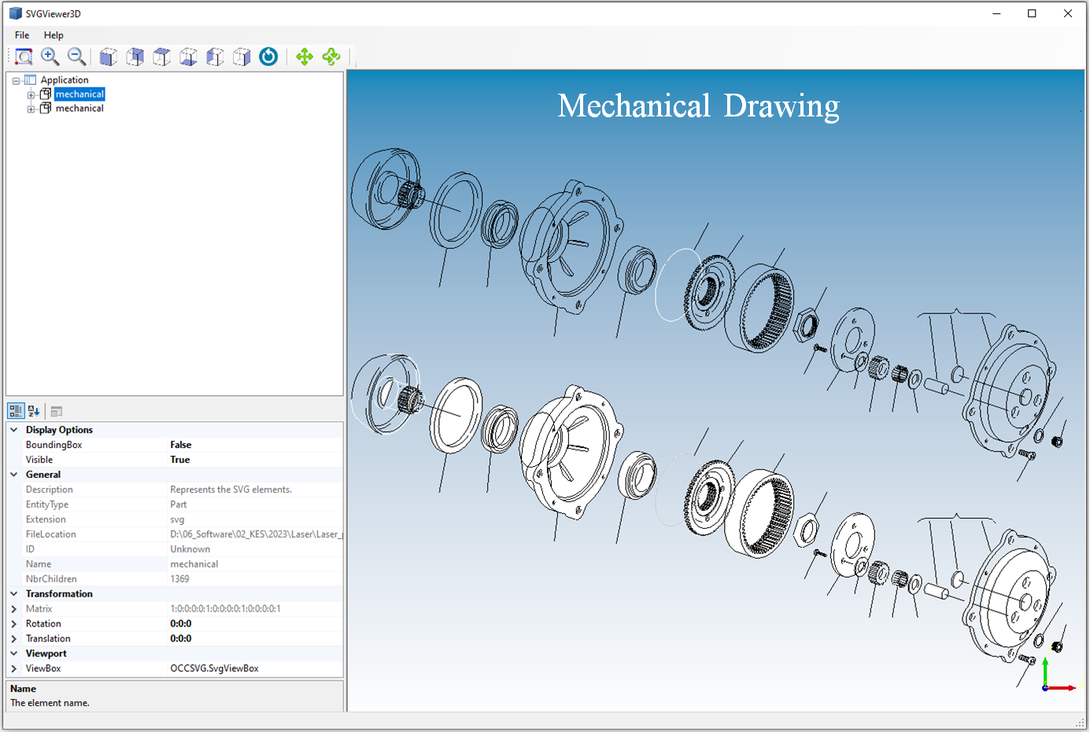
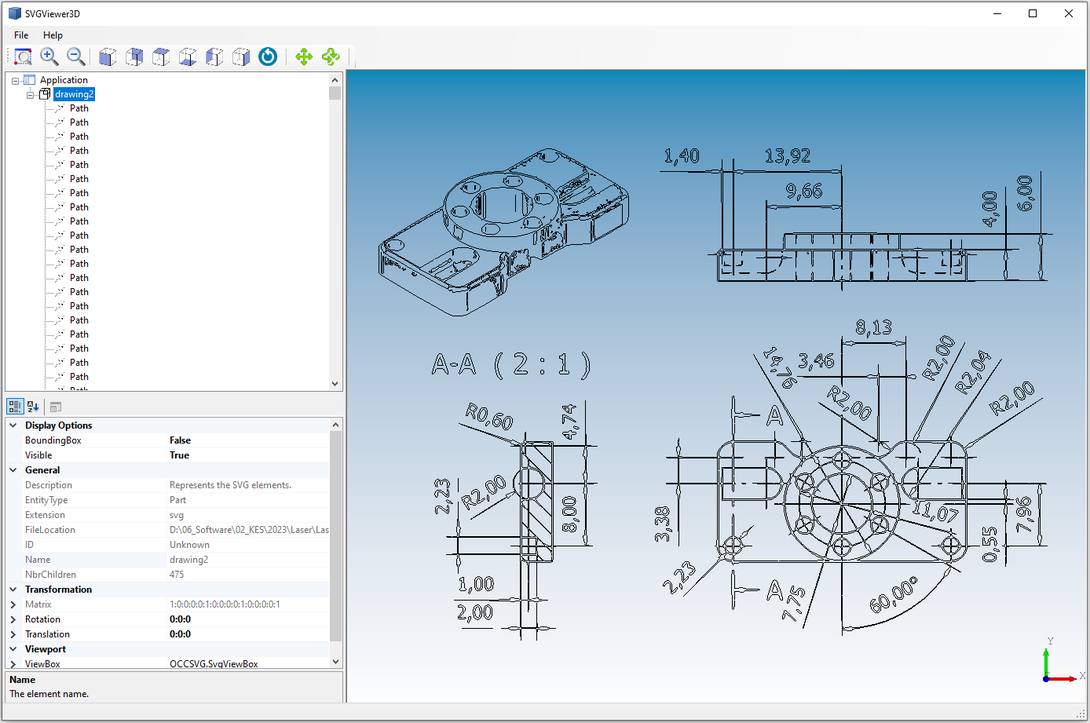
Commercial
The commercial version's integrated module can convert SVG files into shapes or geometry objects. The SVG elements (Ellipse, Curves, Path, etc.) are easily modifiable, and can assign mouse events to them. 2D-Geometry objects (Geometry Drawing, Path Geometry, etc.) are a lightweight, higher-performance, and lower-memory version of shapes, but they are more difficult to manipulate. For this reason, geometry objects are ideal for complex drawings. Additionally, the read geometry can be further optimized for even better performance.
The package contains a feature that allows the transformation of a 2D-Geometry into a 3D-Geometry via an extrude or projection operation. This can then be exported in various CAD formats such as IGES, STEP, BRep, and STL. This is suitable for extruding 2D SVG logos into 3D logos, which can then be used for CNC milling or engraving on products.
2D To 3D Geometry

Dual-Sided Projection
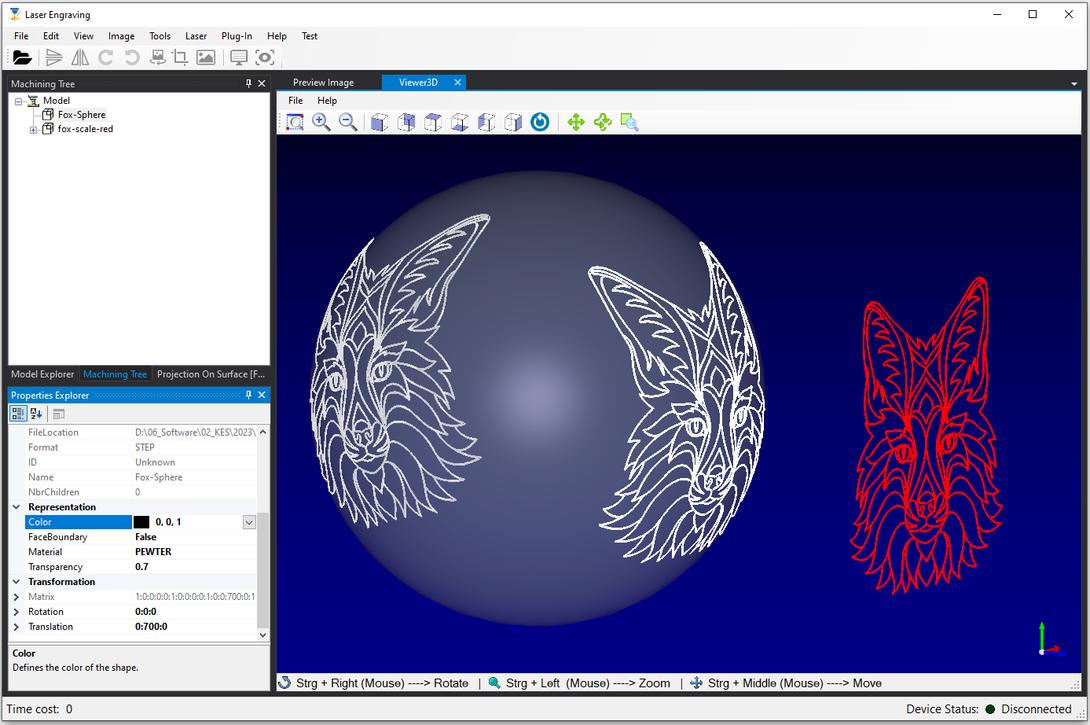
Projection Onto Bended ZigZag Surface
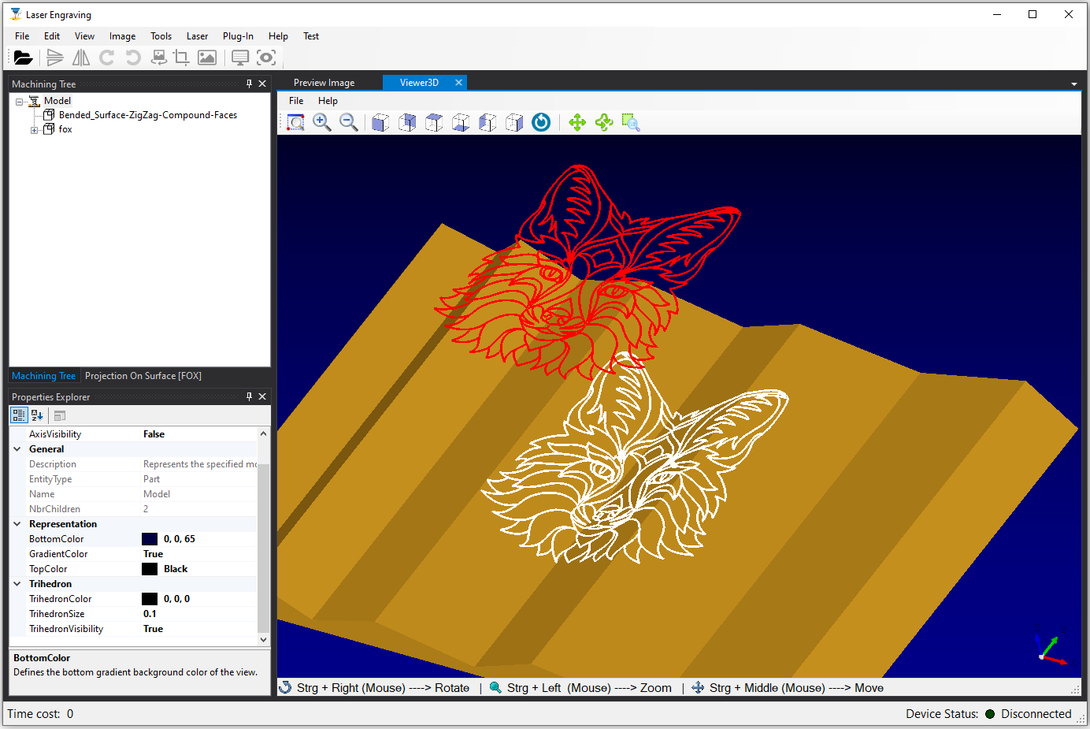
Benefits
The SVG is ideal for Laser CNC engraving and cutting because it uses vector shapes describes by text, enabling high-quality, scalable designs that are easy to edit and precisely controlled by laser software for engraving, cutting, and scoring tasks.
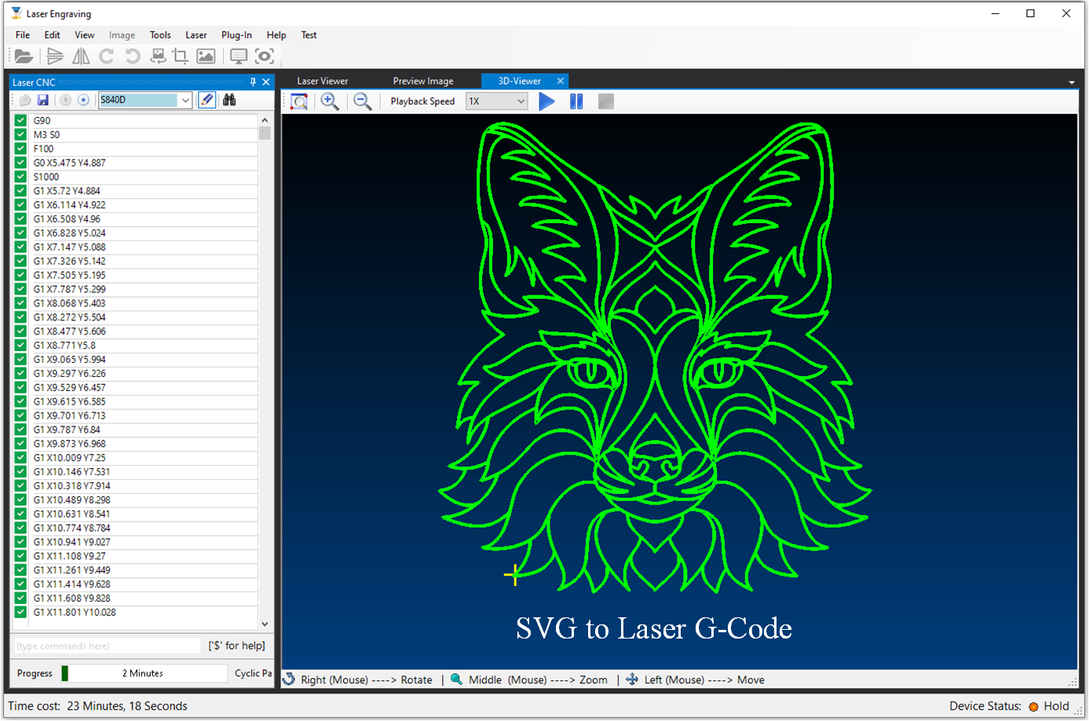
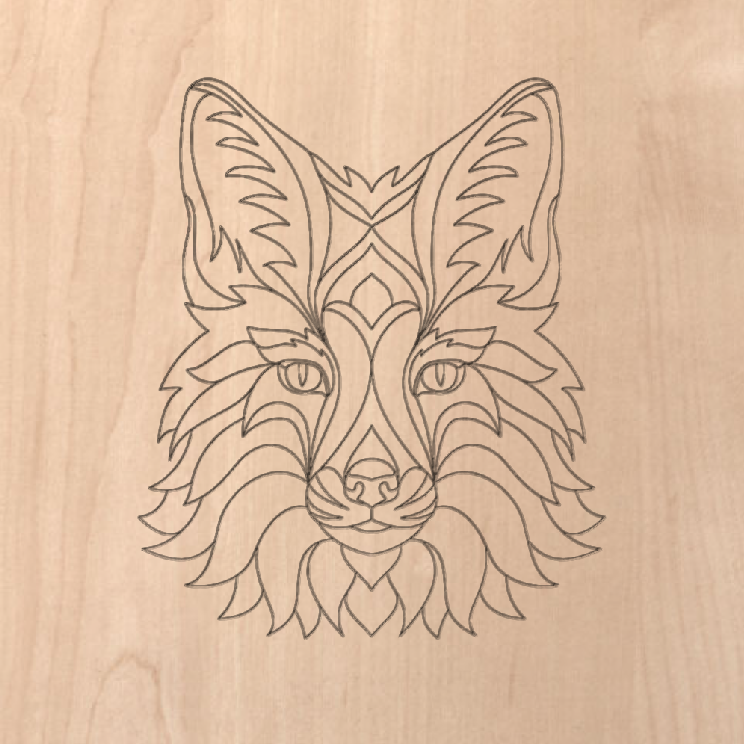
Screenshots
TAGS: Vector Graphics Rendering CNC-Engraving CAD 3D-Visualization BIM
Contact
Do you have more questions?
Give us a call on: +49 (0) 176 310 693 62
or send an email to: info@inovaitec.com
We will do our best to answer your questions!
